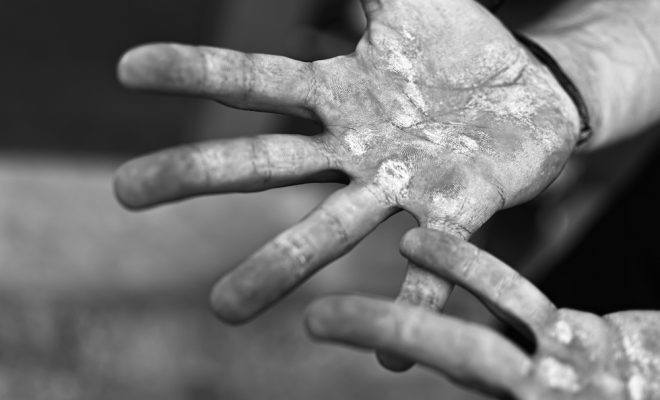Car Wash Workers have many unique issues with respect to workers’ compensation. Car Wash Workers perform varied tasks which place them at risk for injury. Car Wash Workers are exposed to chemicals and liquids which may place them at risk for injury.
This article will discuss Car Wash Workers and the job tasks that place them at risk for industrial injury.
What Makes Car Wash Workers at Risk for Injury?
“The car wash industry, however, has salient features that predispose to important occupational health risks, namely, the use of hazardous chemicals (ie, hydrofluoric acid), the requirement of repetitive use of extremities, [and] close contact with moving machinery,” Occupational Health of New York City Car Wash Workers Dickens, Brittany BA; Ruiz-Olivo, Laura BA; Palaguachi, Diego BA; Jimenez, David BA; Markowitz, Steven B. MD, DrPH Author Information Journal of Occupational and Environmental Medicine: February 2019 – Volume 61 – Issue 2 – p e77-e79 doi: 10.1097/JOM.0000000000001520
What are the Common Job Tasks Do Workers Perform at Car Washes?
In the study, most participants rotated among the few major tasks at the car wash, including drying cars (63%), brushing and soaping cars (56%), and vacuuming and cleaning cars (50%).
Occupational Health of New York City Car Wash Workers Dickens, Brittany BA; Ruiz-Olivo, Laura BA; Palaguachi, Diego BA; Jimenez, David BA; Markowitz, Steven B. MD, DrPH Author Information Journal of Occupational and Environmental Medicine: February 2019 – Volume 61 – Issue 2 – p e77-e79 doi: 10.1097/JOM.0000000000001520
What Type of Complaints Can Car Wash Workers Have?
In the study, “Car wash workers reported a high prevalence of health symptoms during the 12 months prior to the survey, including at least one site of musculoskeletal pain (80%); upper airway, eye, or skin irritation (71%); and at least one lower respiratory symptom (47%) (Table 2). Approximately one-half of all workers reported eye and throat irritation, back pain, neck or shoulder pain, hand pain, headaches, or nausea/stomach discomfort. The majority of workers reported multiple symptoms across the different symptoms groups. Thirty-eight (54%) participants reported two or more musculoskeletal symptoms in the past 12 months, and 37 (53%) reported two or more types of irritation (nose bleeds, throat irritation, eye irritation/burning, skin rash, or skin burn). Two workers had suffered fractures at work in the past 12 months, and one-quarter of the work force reported a laceration or abrasion of the skin. Three workers reported an episode of asthma or an asthma attack in the past 12 months.” Occupational Health of New York City Car Wash Workers Dickens, Brittany BA; Ruiz-Olivo, Laura BA; Palaguachi, Diego BA; Jimenez, David BA; Markowitz, Steven B. MD, Dr PH Author Information Journal of Occupational and Environmental Medicine: February 2019 – Volume 61 – Issue 2 – p e77-e79 doi: 10.1097/JOM.0000000000001520
What Type of Hand Movements Can Be a Source of Injury?
There are numerous tasks at Car Washes that can be a source of injury. These tasks involve Manual Handling, Awkward Hand Positions, Applying Pressure, and the use of Vibrating Tools.
Manual Handling includes “lifting, pulling, pushing, carrying and holding. Tasks that require these actions can include moving and transporting heavy equipment; everyday machines, such as vacuums; and loads, such as laundry.”
Awkward Hand Position includes “contorting hand posture to abnormal positions to clean hard-to-reach areas or slanted surfaces, such as windows. This would also include risks associated with using older or cheap spray bottles or equipment handles.”
Applying Pressure includes “pressing down or applying extra pressure to remove dirt or soil. Consider more powerful cleaning products or equipment if workers are using too much elbow grease to get the job done.”
The Use of Vibrating Equipment which includes “losing control and constant shaking. Machines that vibrate too much can cause hand fatigue, increasing the chances of workers losing control of the equipment.” . The importance of hand care in the car care industry Rich DiPaolo (2016)
Are There Chemical Exposures That Are Injurious to Car Wash Workers?
Yes. Chemicals used at Car Washes have been implicated in causing occupational illness.
“Exposure to hydrofluoric acid (HF) causes corrosive chemical burns and potentially fatal systemic toxicity. Car and truck wash cleaning products, rust removers, and aluminum brighteners often contain HF because it is efficient in breaking down roadway matter.” Reeb-Whitaker CK, Eckert CM, Anderson NJ, Bonauto DK. Occupational Hydrofluoric Acid Injury from Car and Truck Washing–Washington State, 2001-2013. MMWR Morb Mortal Wkly Rep. 2015;64(32):874-877. doi:10.15585/mmwr.mm6432a4
“Occupational exposure to HF-based wash solutions can result in chemical burns, disability, and death. HF’s potential to cause severe injury.” Supra.
Are Car Wash Employees At Risk for Skin Disorders?
Yes. Cash Wash Employees suffer skin-related due to working with liquids. This type of work is called “wet work.” Zani MLC, Lazzarini R, Silva-Junior JS. W arm-water immersion foot among car wash workers. Rev Bras Med Trab. 2017;15(3):217-221. Published 2017 Sep 1. doi:10.5327/Z1679443520170021
“Wet work is characterized by activities involving frequent immersion of the hands in water, frequent or intensive hand washing or frequent use of impermeable gloves. Workers exposed to wet work might develop hand eczema and contact dermatitis”
Car Washes provide for the risk of both hand skin disorders as well as foot skin disorders. Supra.
“Prolonged contact with water causes different forms of dermatitis, including hand eczema among workers exposed to wet work3. In turn, superficial mycoses are the conditions that most commonly affect the lower limbs. However, continuous and excessive contact with water might also cause a disorder known as immersion foot or trench foot. The latter is a dermatosis that results from prolonged exposure to physical agents such as dampness and cold, and was first described among soldiers in World War I (1914-1918). ”
Supra.
What if I Need Advice?
If you would like a free consultation regarding workers’ compensation, please contact the Law Offices of Edward J. Singer, a Professional Law Corporation. We have been helping people in Central and Southern California deal with their workers’ compensation cases for 27 years. Contact us today for more information.



